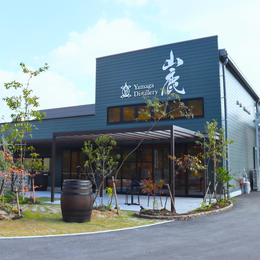
You’ve seen it. The matte black bottle with gold lettering, chilling in an ice bucket at weddings, brunches, airport duty-free displays — maybe even on your friend’s coffee table next to a half-eaten charcuterie board and a trendy scented candle.
Freixenet (pronounced “fresh-eh-net”) is one of the most recognisable Cava brands out there, and behind its stylish black bottle is over a century of bubbling tradition, clever innovation, and Catalan sparkle.
From love stories and black bottles, to space expeditions and German mergers, here's everything you need know about Spain’s iconic fizz and the world's largest Cava Giant, Freixenet.
1. It Begins With a Love Story (and Some Grapevines)

Left: Pedro Ferrer Bosch and Dolores Sala Vivé, married in 1911. Right: The very first Freixenet Cava expression launched.

Freixenet’s story begins with a marriage of two winemaking families. In 1911, Pedro Ferrer Bosch, known as “el Freixenet”, who was the son of a family of wine merchants, married Dolores Sala Vivé of the Sala winemaking family, who owned Casa Sala.
Think of it as strategic partnership. In 1914, the husband and wife duo founded Freixenet, officially launching their very first Cava expression in the same year.
2. Freixenet may have been the younger disruptor to Codorníu's Cava empire, but has today become the world's largest producer of Cava.

At the time of Freixenet's founding, Cava had already been invented decades earlier by Codorníu in 1872. As the young disrupter, Freixenet sought to grab some of that pie by championing a new vision of what Cava could be: fun, fashionable, and accessible.
By 1985, Freixenet had grown to become the biggest Cava player globally by mile, producing more than 114 million bottles annually. For reference, Codorníu is the second largest Cava player, with an annual production scale of 45 million bottles.
3. Freixenet's flagship Cordon Negro was a gamechanger, and not just because of its iconic matte black bottle.

When Freixenet's flagship Cordon Negro bottle was introduced 1974, it broke the mold for several reasons.
In the 1970s, most sparkling wine expressions on the market were often wrapped in traditional gold foil, with producers demonstrating a preference for more formal motifs. Freixenet flipped the script with its bold, matte black bottle and minimalist gold label. This uniquely modern and sleek appearance became a hit, especially in the US market where it became known as "The Black Bottle". Additionally, Cordon Negro also made history as the first ever Cava that was vinified at a controlled temperature, a technological breakthrough for Freixenet.

Cordon Negro's popularity helped democratize bubbly, and is undoubtedly Freixenet's most celebrated expression to date. It was even selected as the official Cava of the Barcelona 1992 Olympic Games, and earned the title of the first sparkling wine to reach outer space thanks to astronaut Helena Kondakova, who popped a bottle from the Mir International Station in 1994.
4. Freixenet Uses the Traditional Method To Make Their Cava, Just Like Champagne.

Cava might be more wallet-friendly for your typical Champagne, but it definitely doesn’t cut corners. Unlike other sparkling wines made via the tank method, Cava is made using the Traditional Method of secondary fermentation, the same time-intensive process used in Champagne production.
After fermenting the base wine, winemakers will add a blend of sugar/must and yeast into the bottle, which triggers a secondary fermentation process that helps create Cava's fizzy texture. The wine is then aged on the lees (which is when wine is matured in contact with dead yeast cells called lees), which helps to round out the body and flavours of Cava. Finally, the bottles are riddled, disgorged and dosed to achieve the final taste and sweetness level.
5. Freixenet has been using the same decades-old mother yeast to make its Cava.

To make its Cava expressions, Freixenet has continued to use its very own yeast culture that was first selected by Dolores during her time. The Freixenet F5 yeast was isolated in 1987 and is said to boast exceptional oenological properties. To ensure enough supply of this yeast to meet Freixenet's behemoth production demands, the winery dedicates an entire lab and warehouse-sized facility to preserve this yeast strain.
6. Freixenet works with other 1,200 growers to source the grapes for their expressions.

Less than 1% of the grapes used in Freixenet's wines come from their own vineyards. Instead, the winery works with over 1,200 contracted growers to source various grape varietals. This allows them to obtain diferent varietals of grapes from a range of of vineyards across the Cava region, giving them more flexibility of base wine styles.
While a trio blend of Macabeo, Xarel·lo, and Parellada grapes is typically used in their flagship Cava expressions, Freixenet also doesn't shy away from using other native, lesser-known Spanish grapes, such as the Malvasia or Trepat.
7. The founding family of Freixenet nearly lost it all during the Spanish Civil War!

Freixenet's rise was not without hardship or losses. In the 1930s during the Spanish civil war, Pedro Ferrer was actually executed in the Spanish civil war by Republican forces, leaving behind Dolores Sala as a widow. The family also lost the company, but thanks to Dolore's determination, she and her daughter were able to recover the company after the war and rebuild its operations.
8. They’ve Expanded Beyond Spain, and Into Prosecco.

Freixenet may have started as a Spanish winery, but its ambitions are global. In 2018, German group Henkell & Co acquired 50% of Freixenet to form Henkell Freixenet, which today is the world's leading sparkling wine group.
As part of the new alliance, Freixenet launched it's first Prosecco expression, which was made in Italy’s Veneto region with the Glera grape. Henkell Freixenet also produces Italian rosé, still wines, and even canned sparkling wine.
If Freixenet is the trend-savvy sibling in sleek black, then Codorníu is the elegant elder statesman in a tailored suit — both sparkling, both Spanish, but with different stories to tell. Read nine things you should know about Codorníu Cava here!







